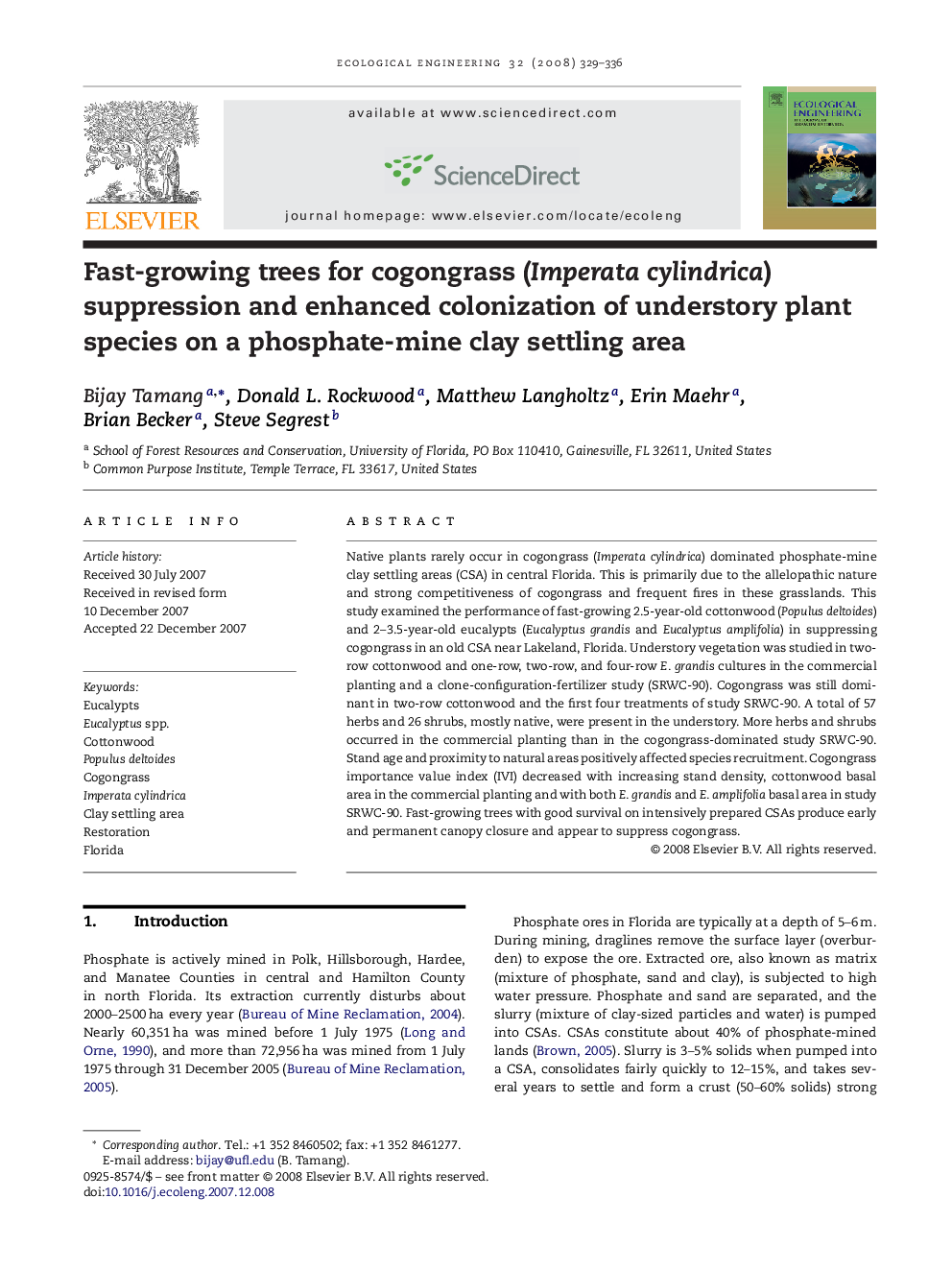| Article ID | Journal | Published Year | Pages | File Type |
|---|---|---|---|---|
| 4391054 | Ecological Engineering | 2008 | 8 Pages |
Native plants rarely occur in cogongrass (Imperata cylindrica) dominated phosphate-mine clay settling areas (CSA) in central Florida. This is primarily due to the allelopathic nature and strong competitiveness of cogongrass and frequent fires in these grasslands. This study examined the performance of fast-growing 2.5-year-old cottonwood (Populus deltoides) and 2–3.5-year-old eucalypts (Eucalyptus grandis and Eucalyptus amplifolia) in suppressing cogongrass in an old CSA near Lakeland, Florida. Understory vegetation was studied in two-row cottonwood and one-row, two-row, and four-row E. grandis cultures in the commercial planting and a clone-configuration-fertilizer study (SRWC-90). Cogongrass was still dominant in two-row cottonwood and the first four treatments of study SRWC-90. A total of 57 herbs and 26 shrubs, mostly native, were present in the understory. More herbs and shrubs occurred in the commercial planting than in the cogongrass-dominated study SRWC-90. Stand age and proximity to natural areas positively affected species recruitment. Cogongrass importance value index (IVI) decreased with increasing stand density, cottonwood basal area in the commercial planting and with both E. grandis and E. amplifolia basal area in study SRWC-90. Fast-growing trees with good survival on intensively prepared CSAs produce early and permanent canopy closure and appear to suppress cogongrass.
